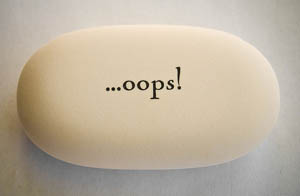When Does the Interview Actually ‘Begin?’ Part 2
March 26, 2014 Leave a comment
Last week I asked the question ‘when does the interview actually begin‘ and now here’s another example of when interviewing, as part of your job search, it’s best to be on your game – all the time!
When I was the Director of Recruiting & Employer Relations for Mount Holyoke College’s Career Development Center, we had what was, at the time, a very good and disproportionately large amount of activity in our career center both on the student and employer front.
Annually, in the fall, ‘banking season’ hit like clockwork as all the heavy-hitters from Wall Street and beyond came up to the (Pioneer) Valley to recruit for internships and full-time employment, each trying to get a jump on their competitors in the process. What helped was that we shared recruiting opportunities with other institutions in the area so this was added benefit to the employers coming to the area; they got access to 5 colleges for the price of one in only one or two days of their staff time!
New and aspiring analysts and interns were needed and the likes of JPMorganChase, Deutsche Bank, Goldman Sachs, UBS, Merrill Lynch, Morgan Stanley, Lehman Brothers, Barclays (sadly, some of these are now casualties to the 2008 financial hiccup) and many others, would arrive on campus for their catered information sessions so that the team could present the value of their respective organization over a nice meal and some mingling and networking time. This would typically happen the evening before their a day-long roster of pre-selected analyst want-to-be’s interviewing skills being put to the test.
One of my favorites was a woman who came up each year to host the festivities. She was an alumna of Mount Holyoke so there was a bit of an allegiance on her part but she also wanted to make sure that the process was done and done well, meeting the candidates herself. Not that she had any distrust in her team or was a micro-manager. She didn’t and she wasn’t. But she DID view her visit as a way to tell the prospects “this is important and I’m making the trip to say so.” As she was up in the ranks too, as a Managing Director on Wall Street, she was a player for real and the students knew this and were thankful she was to make the trip.
The day-long interviews would take place and at the end of such, the team would gather and chat about who they think should get the ‘Holy Grail’ of an invitation for a second round back at the corporate headquarters in Manhattan. For those that got this invitation, they were on their way! Large attrition happened in the first round but of the few selected for the second, they had a good chance of receiving an offer.
The day of the second round interviews in NYC was where you’d meet a good cross-pollination of members of the organization and get a better picture of what each of them did. This Managing Director was interested in watching how the candidates would navigate the day in the city and their introductions around the office. In particular, though, and unbeknownst to the candidates, one of the most important interactions and moments of their day was navigating through reception.
She never told them this or qualified it in any way, but for her it was one of, if not the, most important part of the day’s screening. She’d watch each and every candidate and their interactions with the person or people at reception and carefully register how the candidates treated those individuals behind the desk. If there was any sense of less than stellar treatment that potential candidate, their potential just went away in the moment. they’d still go through the machinations of the day’s plans, but an offer would never then come.
Any sign of dissent, disrespect or condescension to the reception staff was a death knell for a candidate and she would wield this without any elasticity no matter how well the candidate ‘nailed’ their second round day! To her it was an interpolated measurement of how that candidate, if hired, might be in interactions with clients, customers or staff alike, and for this Managing Director, if one treated anyone with any sort of that demeanor, home they went.
Her reasoning was that everyone is on their “best behavior” when meeting with the people they think are important in the moment. She wanted to see, in sort of an organic way, that there was no variation in their treatment of individuals they were to come in contact with, no matter how low or high in the pecking order, real or perceived. This was her baseline measurement; no matter how good the rest of the day to be, this was the foundation in her measuring the emotional IQ, social graces and moral fiber of each and every candidate and while it was never the final decision to hire a candidate, it was ALWAYS evidence for the decision not to….

Please Share Us!